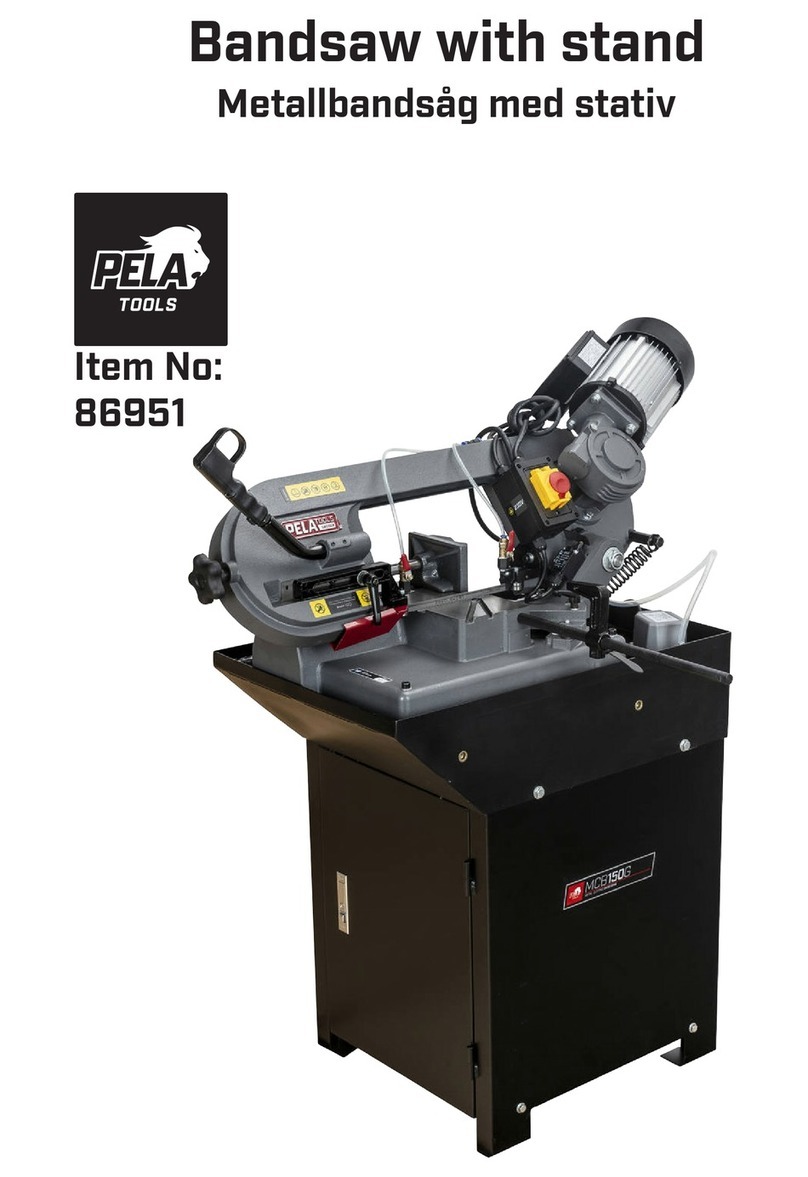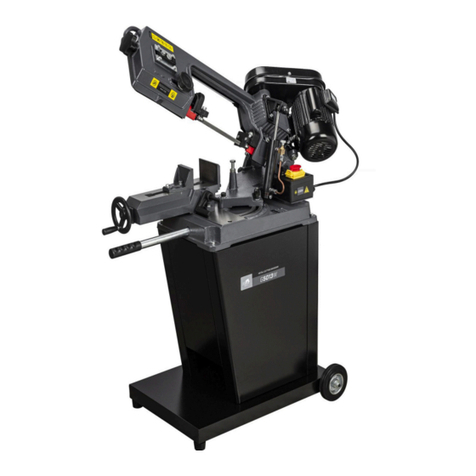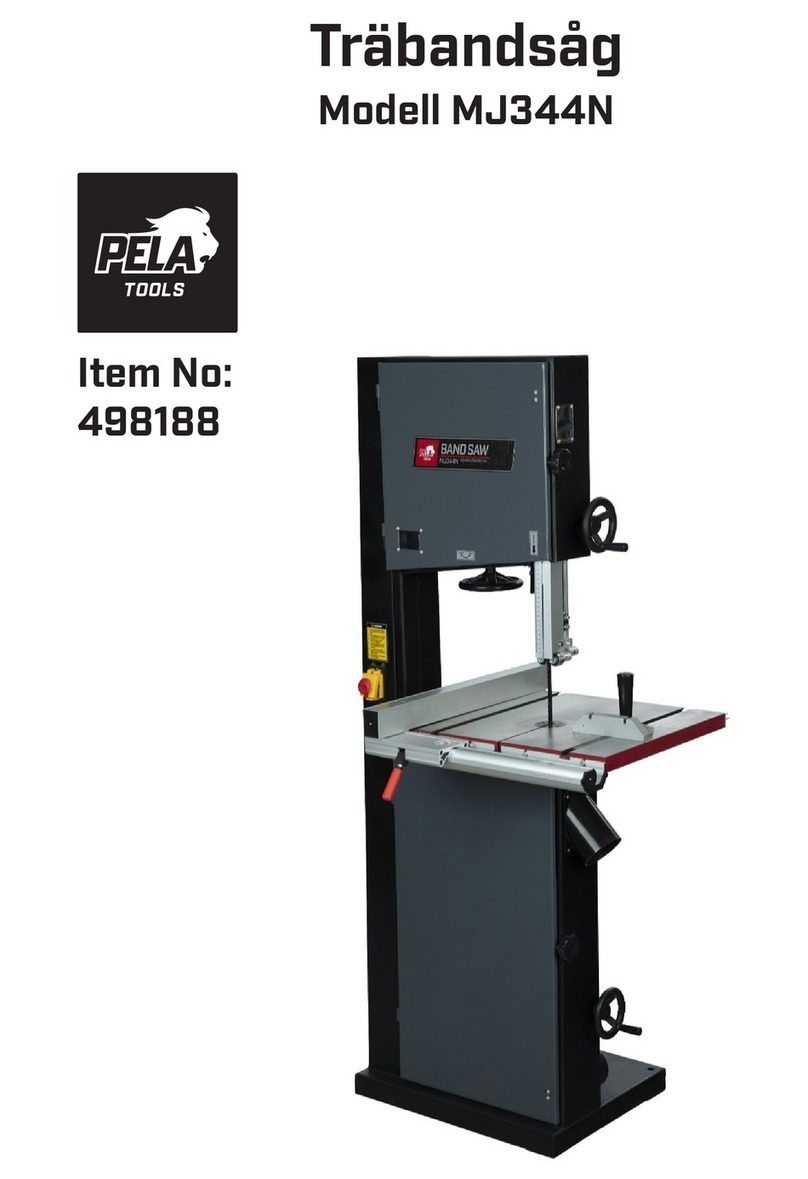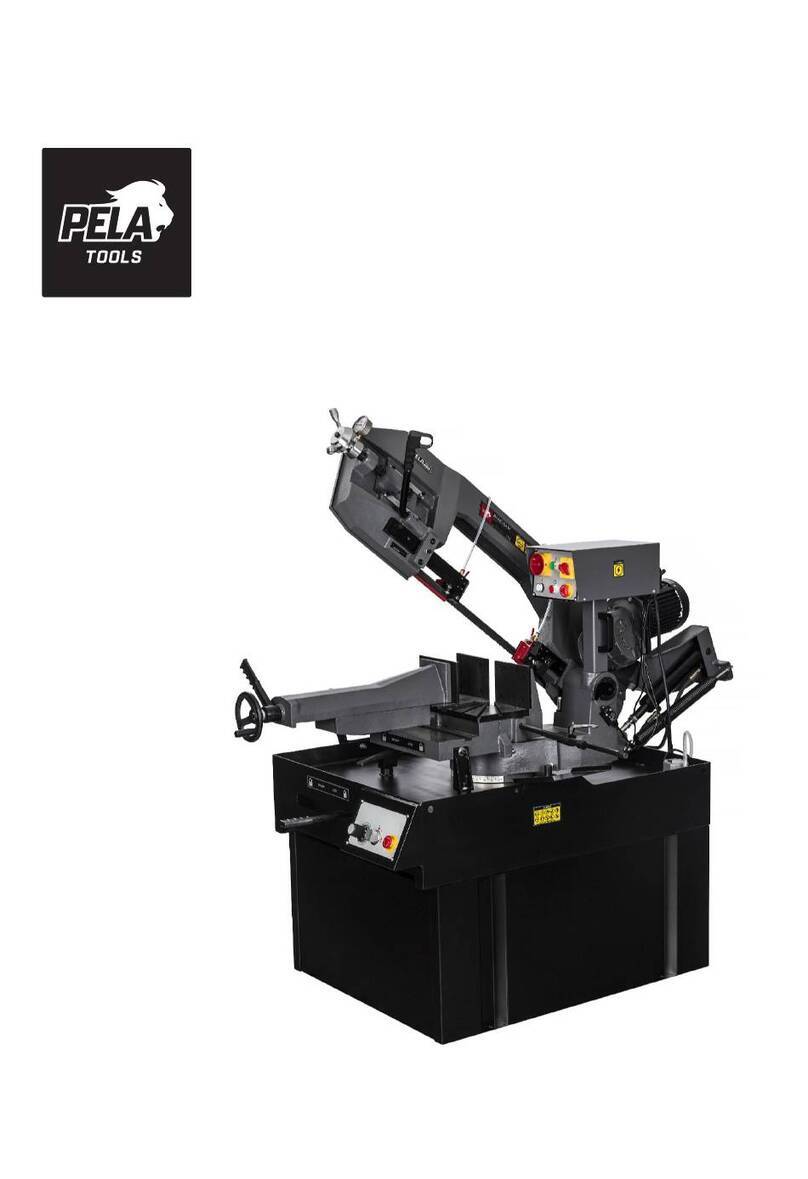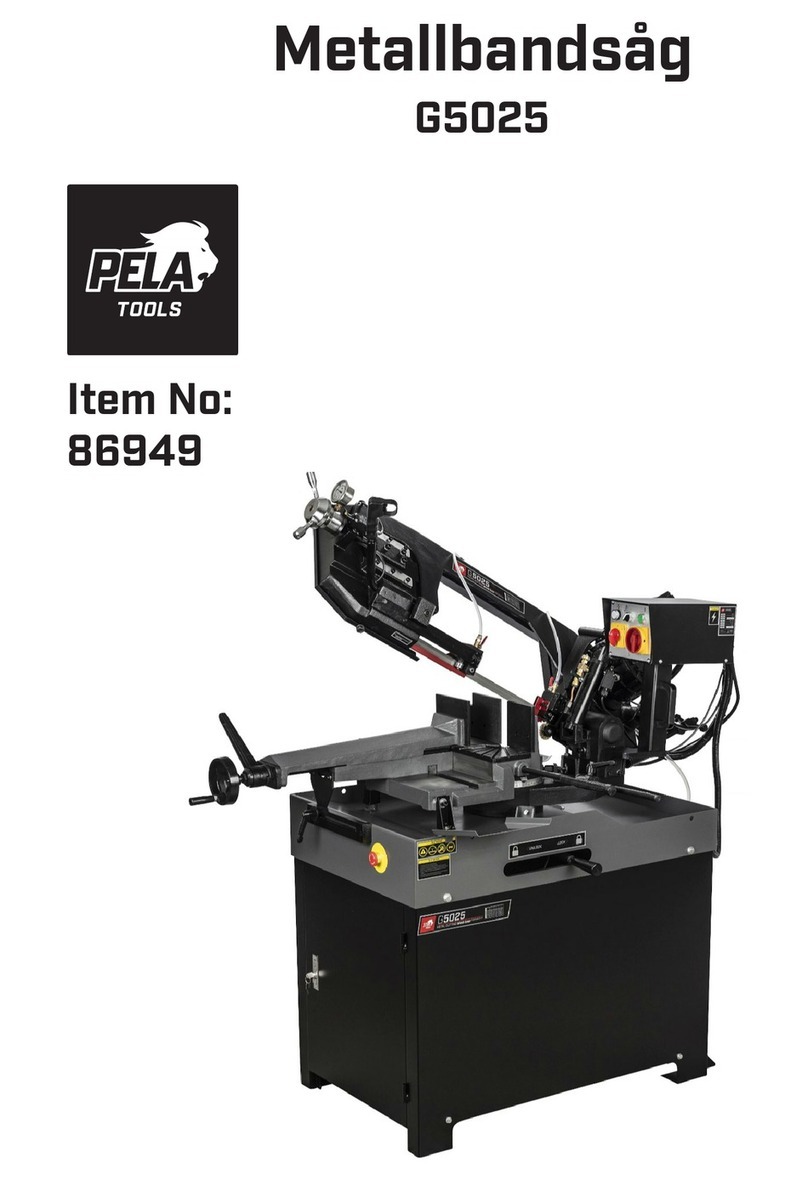
• Reinstall the outer blade
ange, washer, and spindle
screw.
• Press the spindle lock button
to lock the spindle.
• Use an 8 mm hex wrench to
tighten the spindle screw.
• Put the shank guard back to its maintenance
position and tighten the Phillips screw.
• Rotate the blade by hand to check whether the
spindle lock has been released.
• Make sure to remove the hex wrench from the
mandrel screw and store it properly for future
use.
• Check the installation, especially by lowering
and raising the cutting head several times
operating retractable lower blade guard.
Warning: After installing a new blade, always run
the machine for a few minutes. Keep away from
the blade. If it contains undetected defects, it may
break during the trial operation.
4. Cutting stroke adjustment
The downward stroke of the cutting head is
adjusted to prevent the blade from touching the
metal base of the machine, the downward stroke of
the cutting head can be adjusted.
Put down the cut head and check whether the
blade is in contact with the machine base. If you
need to adjust down stroke of the whole cutting
head:
• Loosen the lock nut on the
downward stroke limit screw.
(Fig.7A)
• Rotate the adjusting screw
(anticlockwise) to reduce the
cutting head’s downstroke.
(Fig.7B)
• Turn the adjusting screw
(clockwise) to
increase the downward
stroke of the cutting head.
• When the cutting head reaches a satisfactory
downward stroke, tighten the adjustment screw
lock tight nut.
5. Cutting angle adjustment
Note: The lower jaw can be turned 45 degrees. The
factory setting of the rear vise is 00 (the blade is 90
degrees), so that the blade just passes through the
material located in the vise. For angled cuts, the
rear vise can swing through (up to) 45 degrees, and
the vise jaws include angle measurement scale for
easy setting.
Change the jaw angle of the back
vise:
• Loosen M10 socket head cap
screws and lever handle lock
screws.(Fig.8)
• Rotate the rear vise jaws to the
desired angle.
• Use the provided hex wrench
to rmly tighten the hex screw,
and then tighten the lever
handle locking screw.
Warning: The lever handle locking screw has a
spring-loaded repositionable lever. It may be
necessary to reposition the lever to ensure that the
locking screw can be fully tightened when the rear
vise jaws are angled.
To reposition the lever on the screw, pull the lever
up and rotate the lever to a convenient position (a
position that allows tightening the screw) to
release the lever and tighten the screw. Front vise
jaws will automatically compensate for any set
angle of the rear jaws, or adapt to irregularly
shaped workpieces.
Reposition the rear vice
The rear vise jaws can be removed from the
machine base and repositioned.(Fig.9)
Repositioning steps:
• Remove M10 socket screws
and lever handle lock screws,
and all the washers that lock
the lower jaw to the machine
base.
• To remove the locking screw
handled by the lever, use a at
head screwdriver unscrews the
locking screw from its
maintenance position, and pull
the lever and hold the spring.
• After repositioning the vise
jaws, since there are six on the
machine base threaded holes,
so there are three possible
positions available.
• Replace the locking screw and
sleeve head screw with the
lever new repair location. Make
sure that all standard and lock
washers are position correctly.
Reposition the rear vise jaws
to the rear position and enable
cutting the rear tiger in a more
forward position of wider block
of jaws.
